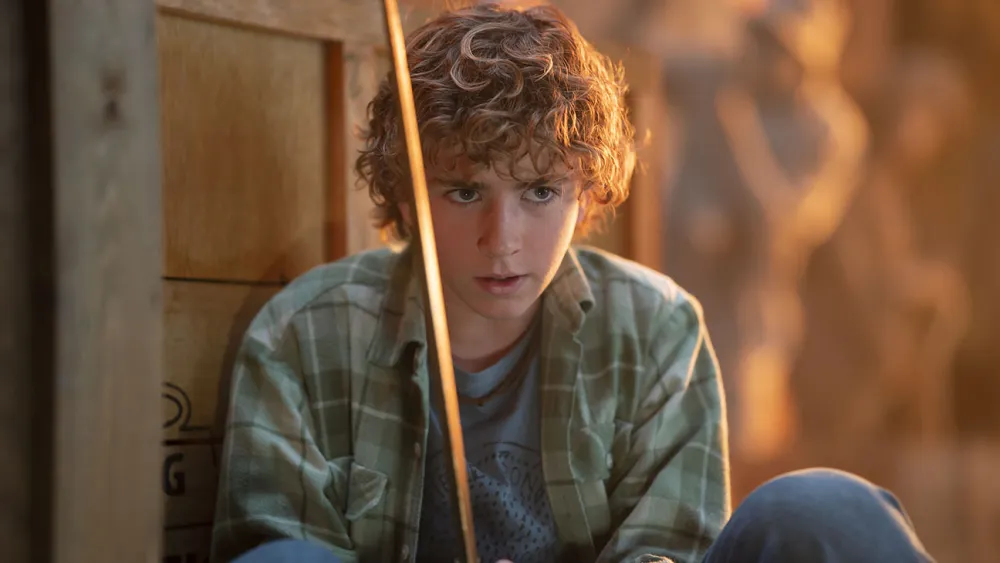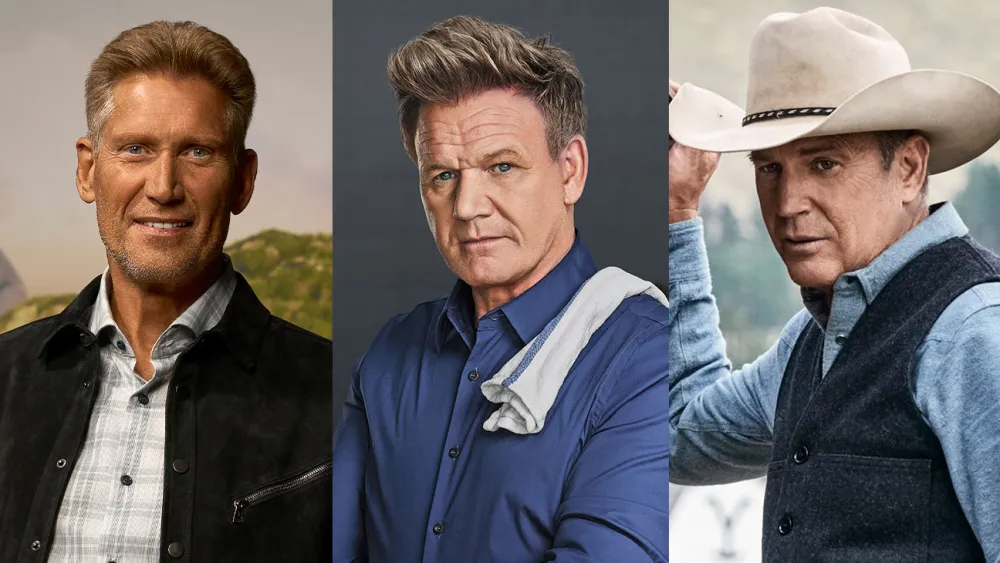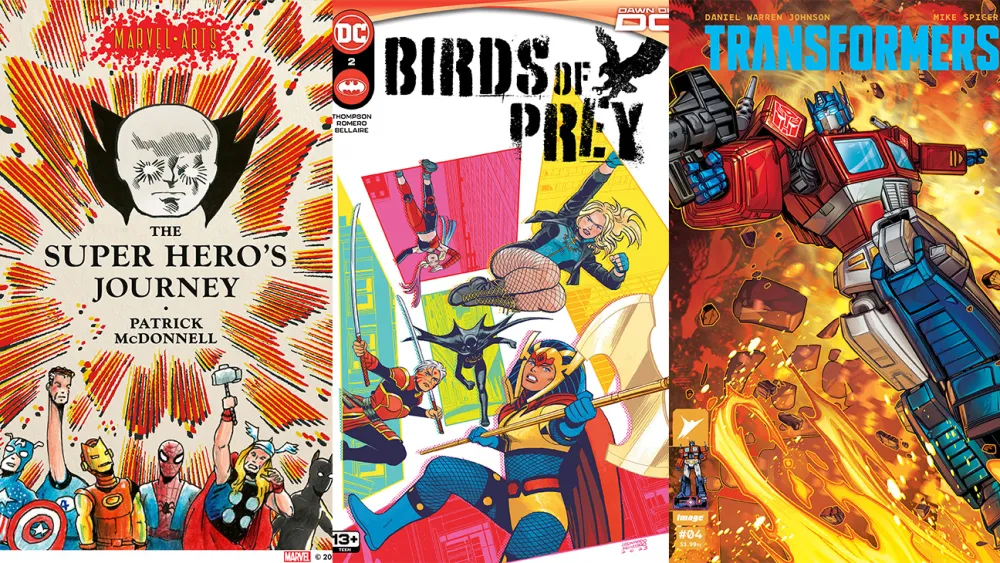The Disney+ series uses ILM’s StageCraft sets to create its virtual environments — and turned to fan art to help create the show’s look.
After being claimed as the son of Poseidon at the end of Percy Jackson and the Olympians‘ second episode, Percy (Walker Scobell) begins his quest to return the Master Bolt to Olympus. He, Grover (Aryan Simhadri) and Annabeth (Leah Sava Jeffries) hit the road, ending up at, as the episode title (and corresponding chapter of The Lightning Thief) notes, the “Garden Gnome Emporium” of Medusa (Jessica Parker Kennedy).
Except, as will be the case with most of the locations the trio visits on their quest, the actors didn’t actually venture out across the country — instead, they worked mostly within a StageCraft set in British Columbia, with the ILM-designed space providing virtual locations for both Camp Half-Blood and the places Percy, Annabeth and Grover will visit later in the season. The technology — also used on The Mandalorian, House of the Dragon and other productions — allows the actors, director and cinematographer to see the virtual environment around them and creates a more immersive on-set world than working against a blue- or green-screen backdrop.
“The moment your brain takes you there, you’re inside that world. It’s real,” production designer Dan Hennah — an Oscar winner for The Lord of the Rings: The Return of the King — told The Hollywood Reporter. “The foreground has [built] elements you can touch, and the background has elements you can see, and they work together in harmony. You’re stepping into your own illusion, which is very cool.”
The Percy Jackson and the Olympians books contain a good amount of description of places and objects, but they’re not illustrated. VFX supervisor Erik Henry turned to a number of different sources for inspiration — including fan-created art of the camp.
“That was definitely an area I went online and saw what people liked, and I borrowed from that, let’s say,” Henry said. “I hope that people will like what we did.”
Henry also said the long panning shot when Chiron (Glynn Turman) is showing Percy around the camp was a collaboration between his and Hennah’s teams. “Dan had an idea of what that should be, and we put in all of what Dan wanted,” Henry said. “Because it was this big pan, we started to scratch our heads and say, ‘Well, maybe we should add a little bit more.”
The waterfall and volcano in the background were among the additions, as were glimpses of a paddock for flying horses kept at the camp — an allusion to the second book in the series, Sea of Monsters, and a possible second season of the series (as of publication time, Disney+ hasn’t made a decision on the show’s future).
Within the show’s fantastical world are also supernatural beings, of course. ILM VFX supervisor Jeff White said his team was heavily involved in creating the minotaur and Medusa’s serpentine hair, as well as a number of creatures Percy and Co. will face later in the season. “We had to do a lot of design work for what is magic in this world, like when Annabeth puts her hat on and disappears,” he said. “What does the Master Bolt look like? Across all those challenges, you want each of them to be unique. You want each of them to be something that people have never seen before, but also faithful to the book. That’s a big design undertaking.”
And sometimes, the creative team used a mix of old and new techniques. Turman is an accomplished horseman and has competed in rodeos, so rather than have him stand on a platform above Scobell when Chiron is in his centaur form, he actually rode a horse, and the effects team then moved his body forward to the front of the horse’s body in postproduction.
The main characters’ visit to the underworld later in the series is something Hennah, Henry and White all mentioned as a highlight of their collaboration, and it too combines new and old techniques. “One of the things we did in the underworld was a forest, but it needed to be bigger than the Volume, which is 70 feet in diameter,” Hennah said. “We built this forest, which is about 150 feet in diameter, and we painted a backdrop. So we went the earliest form of background to the most modern, all in the same series.”




